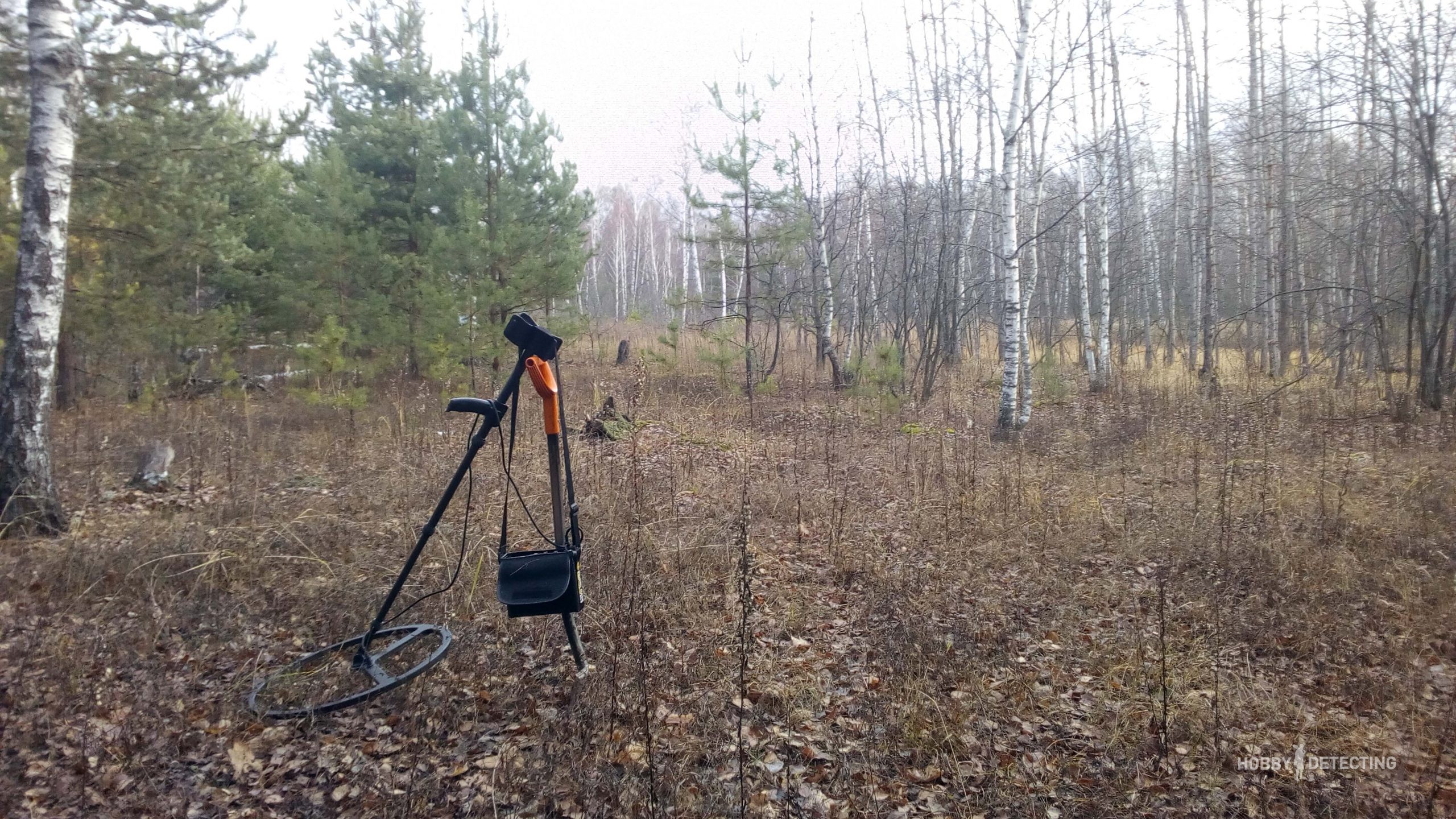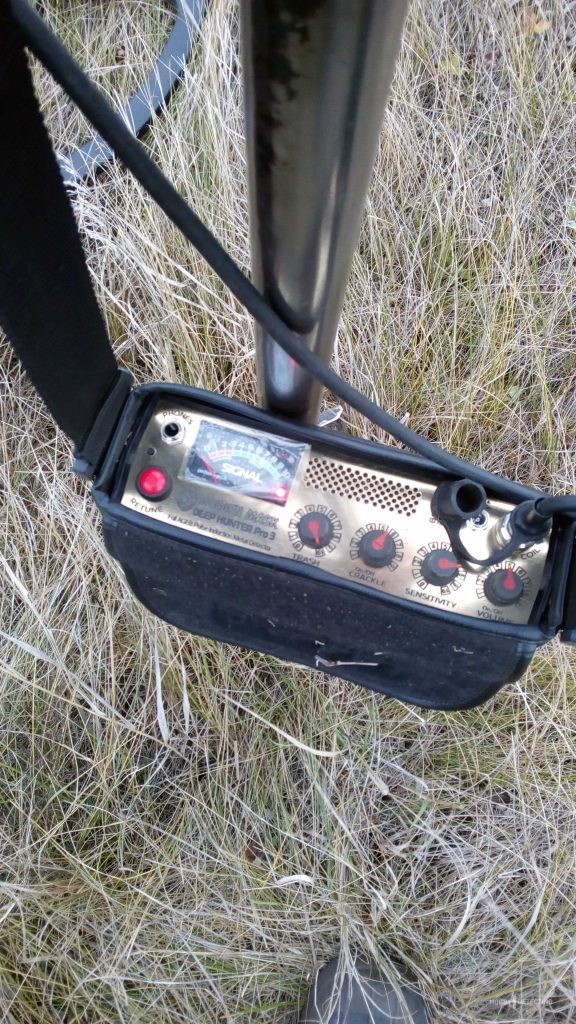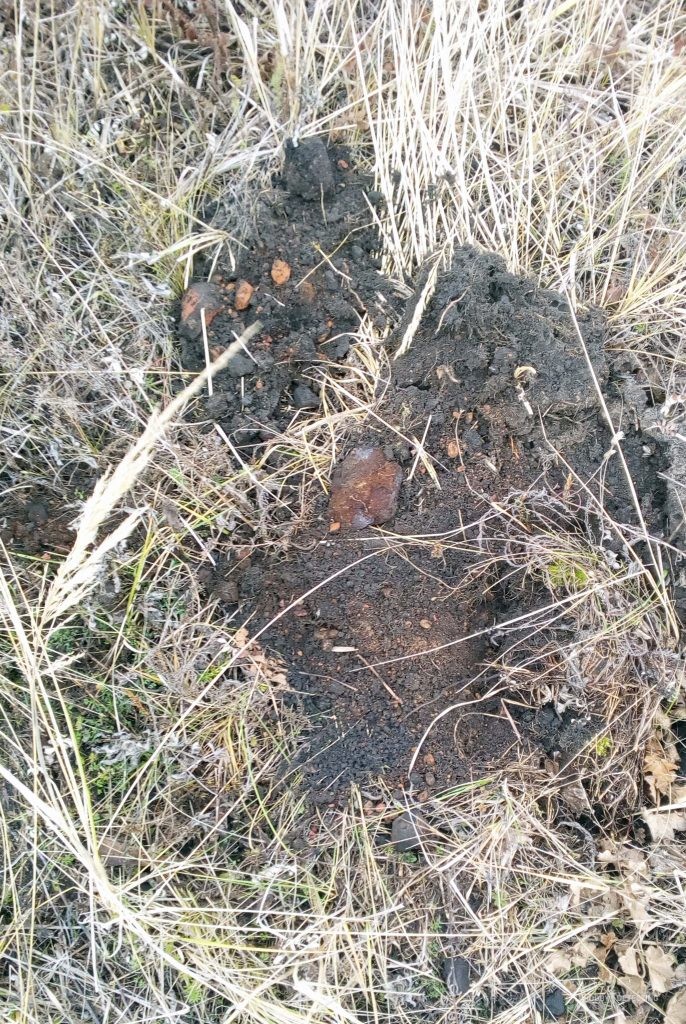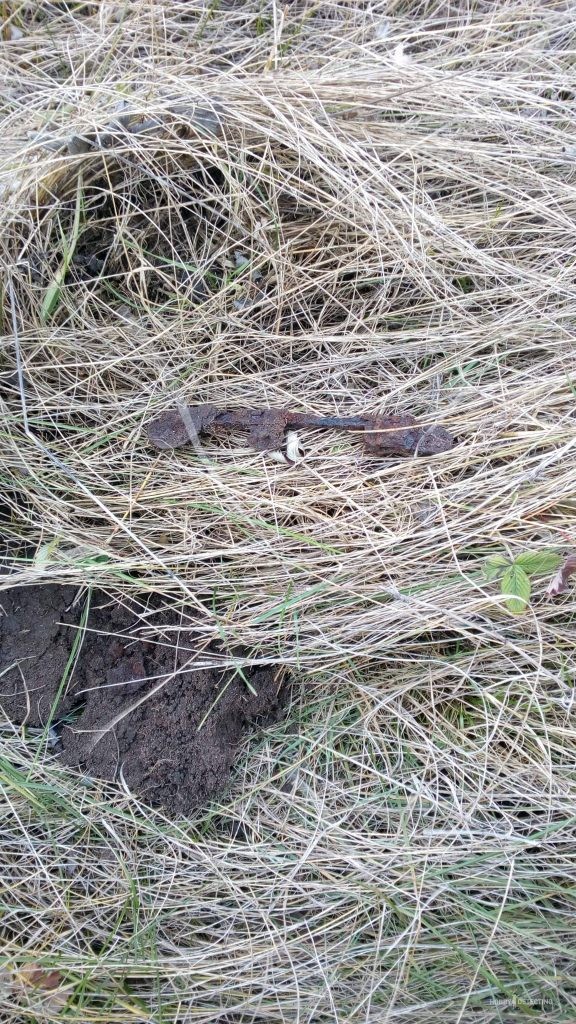Deep metal detector. What should we do with it?
This year I had a very interesting conversation on the field with a couple of comrades. A man of about forty and a young guy, maybe a son, maybe a nephew. As usual, we talked about this and that, about finds, who had brought up anything interesting lately, about instruments. The older fellow hobbyist, Terka, has the 705th, and the younger one, the grater, has the 305th. And, in the end, the conversation came about the deep-dweller. The young guy said quite confidently that he wanted to take out a loan and buy a deep metal detector, I didn’t remember the brand and model, but he said the price was 65 thousand. I listened to him and saw that the guy was passionate about the idea, just like I was in the first year of my hobby instrument search. I listened to him politely, did not interrupt, and then asked a question. “What exactly are you going to look for with him?” “Well, do you have an interesting place in mind for me?” The interlocutor answered me slyly and slyly. And I ask him the question: “Okay, you bought a depth probe on credit, came to that most interesting place, walked with the device all the way up and down. I dug up half a ton of rusty iron and did not find the treasure. What's next? Are there any other interesting places?”
And from the long pause in the young man’s reflection on my question, it was clear that he did not think about the projection of events, what to do with the device, the loan and the indignation of the woman he loved later. But really, what can you find with deep-soil digging in abandoned villages and plowed-up ancient tracts? There is only one video on the entire YouTube of how a group of comrades, in the real conditions of an abandoned village, dug up a cast iron pot with rusty nails using the Golden Mask Deep Hunter. That's all. It was not possible to find more examples with pots of gold and silver.

In fact, the thoughts of this guy were close to me three years ago. Then I, like most novice diggers, believed that I was digging poorly, not because I was digging in the wrong place, but because my MD was weak and produced too shallow a detection depth. And naturally, if you take a deep-diveer like this and run through the meadow behind the village, then the test chervonets, encolpions and scales will immediately begin to appear. And I watched a video on YouTube, where venerable bloggers praised this or that deep dive. Some climbed on camera around the overgrown manor's estate, and others climbed the mountains in the area of old fortresses in the Caucasus. I missed the cop’s video on the war with the deep-dweller, but that’s not my topic. Although it was the comrades from the search team who decided to let me test it this year and understand how to use Deep Hunter PRO 3 in practice in coin mining.
Why not test it, I thought, agreeing. I had this idea, but you can see what you can find in our area with a deep metal detector. So my friends left me a backpack with a toy worth more than 100 thousand rubles. The device came in two variations: a search coil 58 cm in diameter and a prefabricated frame 3×2 meters. Well, in general, I received the device, looked at it and began to think, what and where should I go with it? Then, on occasion, I remembered one story.

A group of comrades of three people. One of them asked friends in the squad for this wonderful deep metal detector with a 3×3 frame for the weekend. Where to go? As it should be, there is one cherished and promising place. Somewhere in the forest, there was an ancient monastery, the grandmother told one of the comrades. Well, as it should be in such stories, there is a storyline about the treasure. It seems that before the revolution, the monastery was very rich, and when the Bolsheviks came, the monks managed to hide all the gold and diamonds. Next came a list of the monastery's antique collections: dishes, vestments, crosses and icon frames. The Bolsheviks tortured and interrogated them, but the monks never gave up the treasure site. According to another version, they were not Bolsheviks, but whites; according to a third, deserters were robbers. But that's not the point. All the monks were tortured to death, and when the torturers left, one of the survivors came out to the people all wounded, fell unconscious and lay in a fever for several days. Being in a fever, he was delirious about something about the grave in which everything was buried. Yes, that’s how he died. The residents of that village then went together in groups and individually, secretly and with the permission of the police, digging everything around that monastery, digging up all the graves, but no one found anything.
Dear readers, have you appreciated the scope of the drama? Naturally, the thought of countless treasures is one of the greatest motivators in the history of mankind. There is an impulse, there is an idea and there will be implementation. I won’t tell you how this company was able to get to the place in a SUV SUV, but upon arrival they came out, looked and described the situation in good swear words. The place was really interesting, but it was tightly overgrown with rosehip bushes. Why can’t such little things be seen from a satellite? One could see a large clearing in the middle of a dense forest, but the fact that there were also bushes there, such little things could only be seen on the spot. As a result, minus five thousand from the comrade for the trip, a spoiled mood, a ruined history of the place about the treasure and a mediocre lost weekend.

I try to minimize my hobby in terms of costs, and therefore, before going with a deep-sea explorer to a distant village, I decided to test its capabilities somewhere nearby. At the same time, and what is called a hand in hand. I have one interesting place in mind. The shore of a lake, a ravine turning into a small bay of the same lake. To guess that there was once a village there at all is contrary to all the rules of logic. The low-lying area is flooded every year, even nowadays, by 1.5-2 meters in the spring. It would be reckless to put any buildings there; in the old days, the bridge was carried away by the flood every year, what will happen to any house or barn in this place? However, in the spring, absolutely by accident, I dug up a very interesting and significant cross there. Moreover, thanks to the mouse holes, I saw that the place was not easy. Black burnt soil and shards of old ceramics. I laid a pit. The depth of the cultural layer is no more than 1.5 fiskar bayonets. The pit was quickly abandoned, since there were no finds at all, not even iron. I thought about what could be there, and the cross is quite remarkable; I think that in the old days there could have been a boat repair area there. All season they burned fires, heated resin and impregnated wooden boats with resin.
In general, a good place is a great opportunity to test the abilities of a depth explorer and gain real experience. The first understanding of the experience was the difficulty of determining the center of the find. The coil is 58 centimeters, respectively, in order to dig out the target you had to dig holes half a meter in diameter. I tried to carry out alignment based on the signal from the edge of the coil, but the same nonsense happened. In such situations, an expensive and sensitive pinpointer comes in very handy. The second point of disappointment was the nails. Although the manufacturer and a few bloggers did not assure that the device really, well and perfectly cuts off small debris, with a minimum trash indicator, the device very well sees standard nails of size 150 mm or more. Having dug up a dozen nails, a bundle of wire, a penknife and a staple, I happily pulled out an ancient forged nail from the ground. Well, finally, at least something from that period, like the cross.

I looked at the area, pockmarked with half-meter-long craters, I dug in, but traces of active activity were still visible. In general, I looked and remembered the saying about a cat who has nothing to do. I collected the device and went to the car. As we know, the first experience is not yet an indicator, so you need to go again. The question is where? Let's go to that forest clearing. Just the day before I found an interesting clearing in the forest with some very old iron. For example, among other things there was a fragment of a horse shoe from the 10th-16th century. The main task of this output was to understand and confirm in practice whether this device can see objects the size of a Katya nickel deeper than the bayonet of a shovel. Purely theoretically it can. In practice, bloggers on YouTube don’t really want to be trusted, so it’s better to do it yourself.
I went out into the forest, walked to a clearing and let’s walk along it. An hour later I realized that I was digging many times more iron here with an ordinary device than with a deep-digger. And again, all that I dug up were superficial signals, no deeper than one spade bayonet. The clearing itself is interesting, but quite overgrown with grass, so I’ll definitely go there in the spring. Until then.
In the meantime, I still don’t understand where and how this device can be used. Purely theoretically, these are two options. The first is to go to a completely knocked out place of some forest village and dig there for what standard MDs could not find. The second option is to look for large objects at a depth of more than a meter. And in this case, the device will be suitable only in settlements where life stopped before the 18th century. Otherwise, you won’t dig up, you won’t dig up any household equipment. Let me note right away that I am not even considering any kind of burial grounds or supposed places of ancient burials. Why? Well, in addition to the moral and ethical side, as well as receiving a real criminal sentence, there is simple logic in this issue. What for? It will not be possible to display such items, it is difficult to sell them and there will not be as much money from sales as many people think. So let archaeologists dig such places.

According to the first option – to comb the area of the knocked-out village, I did just that. I went into the forest for a long trip, collected the device and walked through the place where my comrades and I knocked out everything that gave at least some kind of signal. I walked around and wandered around the place, and as a result I managed to dig up another small iron knife. Yes, in this example it should be noted that the device really saw and gave a clear signal to a deep-lying object that an ordinary professional MD missed. Well, how deep? MD saw a metal object measuring 15×2 centimeters at a depth of about 2 shovels. And that is all. Standard ground MDs are Deus and my Fisher F 70, they cleared everything that was in this area in all-metal mode, and there was a lot there. The result of that trip was great disappointment and regret for the wasted gasoline. The takeaway from this trip? In principle, I knew this before testing the depth explorer, and therefore I will form it this way. The entire cultural layer of forest settlements is 30-40 centimeters. That is, absolutely working depth for any professional MD. There is no point in going to such places with a deep-sea explorer.
“Well, okay,” I thought and decided to go to a universal place to test this MD. I have already written about this tract a couple of times in my notes, so I will briefly remind you. We have an almost extinct village not far from our village. Of the permanent residents, there are only three or four households left there. The rest are summer residents and hunters. So, in the field next to this village there are several locations where this same village stood in the past. There is a place of the 17th-18th century, there is a separate place of the 18th-19th century and, accordingly, the place where the village is now is the 19th-21st century. Last year I actively dug into the 17th-18th century location, but there were practically no finds, but I gained good experience and knowledge of this area. So in the 17th century the village was divided into two settlements, the distance was about a kilometer. One settlement is at the very edge of the swamp, the second is on a hill. Naturally, the settlement that is near the swamp has a cultural layer of 40 centimeters further, white clay, but the second settlement was a little pleased with the foundation pits. Well, at first I considered them fundamental. But when I shoveled a dozen cubic meters of soil, I began to stubbornly think, what is this? There are only two finds for 10 cubic meters of land. Alexey's scales and Anna's money. The rest of the area is the same cultural layer of 40 centimeters. True, in this place it was actively plowed in Soviet times.

Well, okay, I went there with the depth explorer. I didn’t expect a miracle, most likely, to report for myself as a statistic. The first disappointment is the tall grass with hard stems, especially in the areas of the “foundation holes”. I walked around a bit, dug up about a dozen pieces of iron, mostly from the Soviet arable period, one old horseshoe and that’s it. Again, all signals were at the level of detection by ordinary MDs; nothing super-deep could be detected. Perhaps there is something interesting here from the point of view of iron objects, but I didn’t want to spend time on it at all. Okay, after driving three hundred meters, I got out at the 18th-19th century location. I assembled the MD, turned it on and turned it off after five minutes. The device gave a signal for each step. And since it is impossible to determine the size of the target with it, I carried out a couple of control digs. As a result, a broken door hinge and a large piece of cast iron. All with traces of a strong fire. Last year, when I was digging in this location, it was clear from the findings that the village had completely burned out, and the fire was very intense. The remaining glass was melted. And when I returned home, I drove through the village. I noticed that some of the houses had separately dug cellars located in front of the house. And then I realized why, when digging in a 17th-century location last year, I didn’t find anything in the house pits. And the depth of the pit reached two meters. These were not brownies, but cellars, and in these pits you can only look for broken ceramics from jars with butter and melted lard.

This is what experience is like. A week later, with a clear conscience, I returned the depth tank to the owner. Of course, a very interesting toy and, without any doubt, a deep metal detector is a useful thing when digging during WWII. Everything is very clear there, you walk through the crumbling trenches and look for large deep signals. Or use a frame to look for the remains of soldiers in craters across the fields. But, in practice, a coin cop, a deep explorer, is an almost useless thing. Since in locations before the 19th century, a significant part of the finds lies within the visibility range of professional MDs, and in locations of the 19th century and later, when underground pits began to be dug in houses, a deep metal detector is useful only for those who decided to save on active fitness and replace the contemplation of cute phytonyashkas for digging earthen pits.
But what about the treasures on the tracts? You ask. And here I recommend that you read my article “The Theory of the Probability of Treasures” in this article I clearly and thoroughly gave an example of the fact that almost all treasures, from a very extensive statistical table, were found at a depth of no more than 50 centimeters. That is, at a depth accessible to almost all modern ground metal detectors. And this indicator of the depth of treasures has its own practical logic, the one who hid the treasure did it under such a condition that it would be easy and uncomplicated to get part of the treasure or, on the contrary, add some more jewelry to it.
As always, I sincerely wish you good luck in the mine, good signals, sincere communication and interesting discoveries. And for my part, I hope that my note helped some of you make the right decision and not buy an expensive toy if you don’t know at least a dozen places where you could use this deep metal detector for its intended purpose its capabilities.


